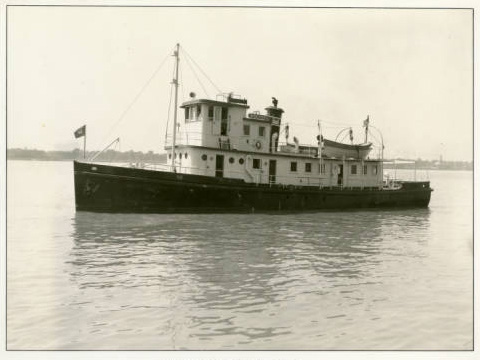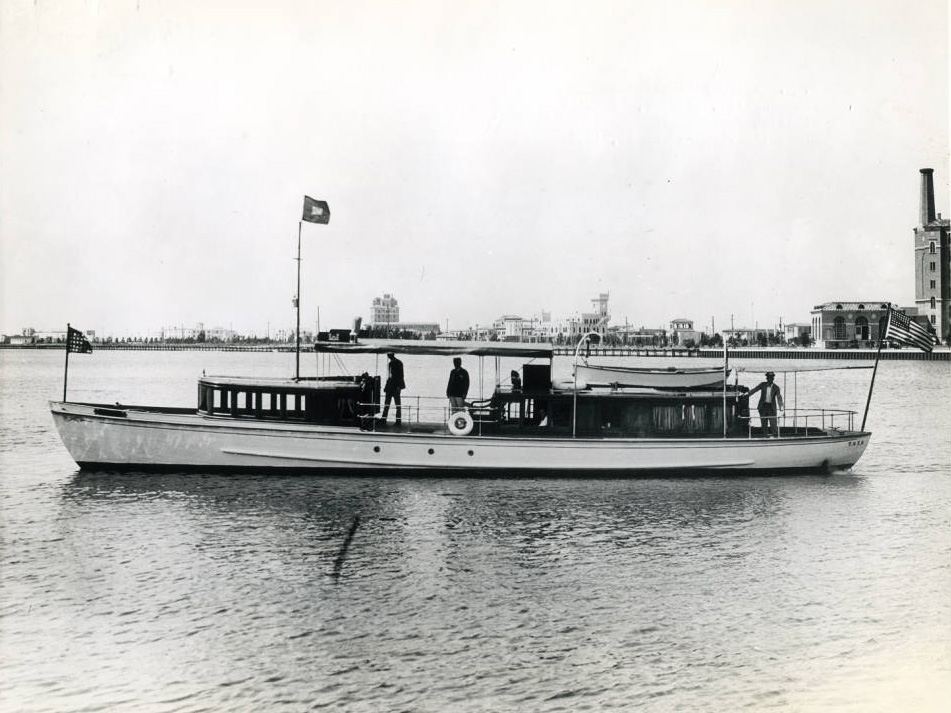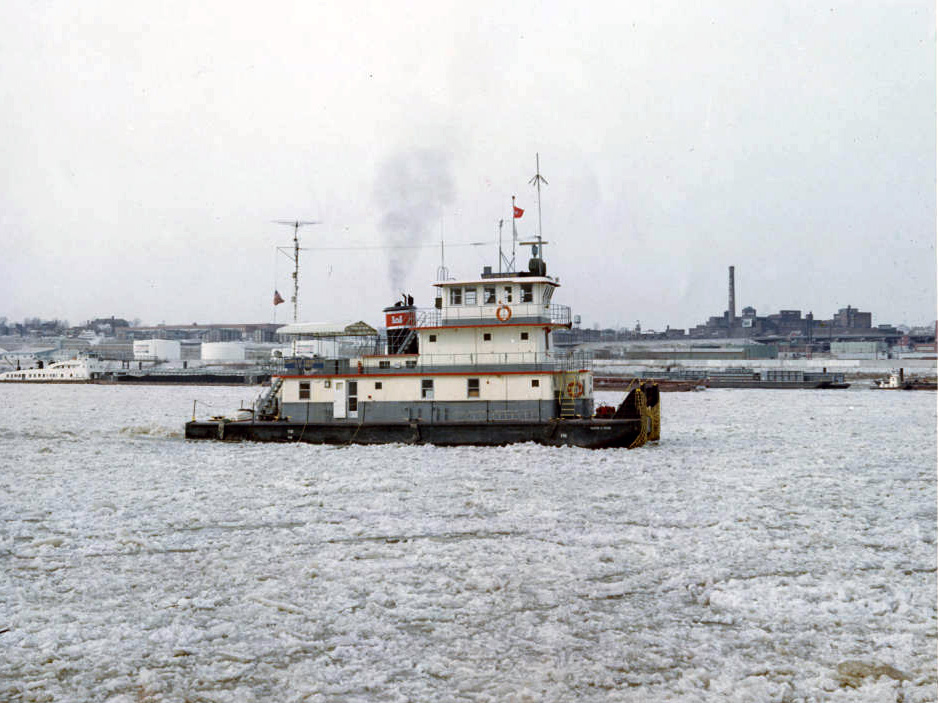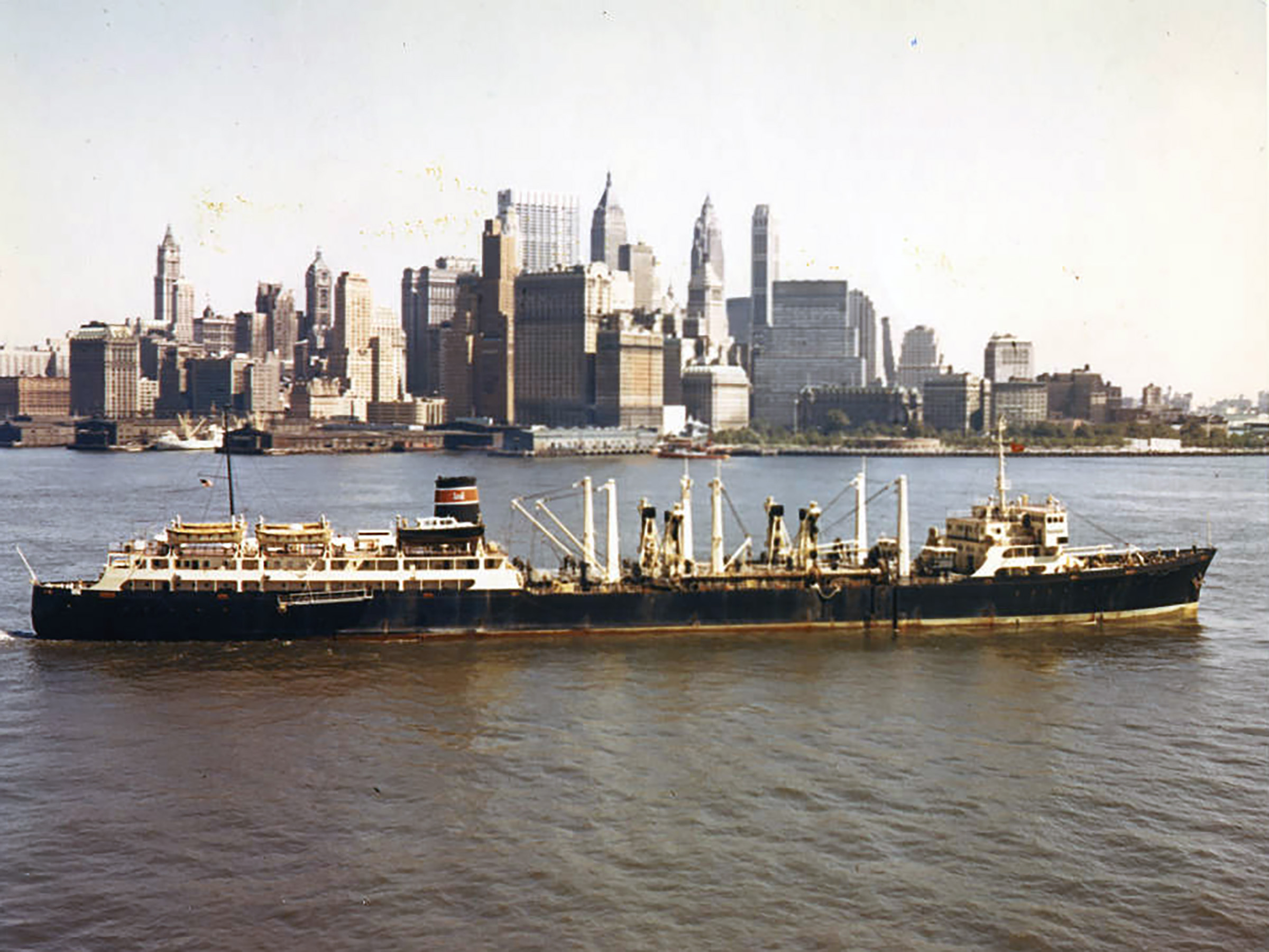The term “floating plant” refers to watercraft (i.e., boats) of all kinds owned and operated by the U.S. Army Corps of Engineers (USACE). (Contrast that expression with the terms “ships” or “vessels” used by the U.S. Navy.) USACE-owned floating plant ranges from very small craft such as tenders, launches, and survey boats to much larger vessels such as oceangoing dredges. Today the Corps of Engineers uses its floating plant, as well as contractor-owned equipment, to carry out the navigation aspect of its Civil Works mission, primarily keeping harbors and waterways unobstructed from impediments like debris or sediment.
The unique role the U.S. Army Corps of Engineers has played and continues to play in the development of the nation’s waterways has necessitated the use of a wide variety of river- and oceangoing vessels. Corps of Engineers explorers used Army vessels in their travels out West. In fact, the steamboat Western Engineer, used to explore much of the Louisiana Purchase in 1819–20, was designed by Army engineer Maj. Stephen H. Long. Corps-owned and -operated boats have provided varied and vital services since 1824, when Congress directed the Corps to remove navigation obstructions in the Ohio and Mississippi rivers. By 1829 the Corps was operating snagboats to lift sunken trees and other debris from streams and rivers.
| |
 |
|
 |
|
 |
|
| |
The snagboat Colonel Alexander Mackenzie, Rock Island District, no date. |
|
The snagboat John N. Macomb snagging at Knowlton, Arkansas, Memphis District, 1924. |
|
Bow view of motorboat Maygo, attached to snagbarge Harve Goodwin. A new marine engine has been installed. Black River, Black Rock, Arkansas, Jul. 1935. |
|
| |
 |
|
 |
|
 |
|
| |
District motorboat Wolcott, Detroit District, Aug. 26, 1938. |
|
Quarterboats Nos. 2214 and 1923 and Derrickboat No. 2003, Melwood, Arkansas, Nov. 24, 1938. |
|
Broadside view of district boat DeSoto, Jacksonville District, May 29, 1929. |
|
Throughout the nineteenth century, Congress delegated wider and wider responsibility for the country’s waterways to the Corps of Engineers. These new responsibilities necessitated the acquisition of a large number of vessels for transportation, surveying, and construction and maintenance of the increasing number of navigation projects assigned to it. In addition, in the 1880s the Corps officially began responding to flood emergencies, as it was the only element of the Army that had a fleet of floating plant that could rescue people trapped by floodwaters, deliver relief supplies, and effect emergency repairs.
In the twentieth century, dredging of rivers and harbors became more prevalent as a means to ensure safe and effective navigation, and the Corps responded by developing a fleet of dredges of all types, some of which were oceangoing. These vessels, in addition to performing peacetime service, provided important support during World War II by clearing wreckage and debris from captured ports in Europe as a first step in bringing them back into service for the Allied war effort. Likewise, Army dredges saw service overseas in the Korean and Vietnam conflicts. In the 1950s and beyond, as the Army Engineers began experimenting with the possibilities of nuclear power generation, the Corps designed the barge U.S.S Sturgis, the world’s first floating nuclear power plant. This ship supplied emergency power to the Panama Canal from 1968 to 1975.
Today the Corps retains ownership of a relatively small number of boats, as the heavy work of dredging and construction is now done by contractors, who provide their own vessels. However, the Corps does maintain floating plant for surveys, inspections, routine and emergency maintenance, and transportation along the country’s coasts, lakes, and inland waterways. Following the attacks of September 11, 2001, USACE boats in the New York City area performed vital emergency services, ferrying evacuees and workers and transporting supplies. Other boats stand by in case of floods or mishaps to navigation structures. Though the Corps no longer has a large fleet, these Army watercraft still do the necessary work of watching over the nation’s waterways and maintaining safe and efficient navigation.
| |
 |
|
 |
|
 |
|
| |
Motor vessel tugboat Gaston Crane on the Mississippi River, St. Louis District, no date. |
|
The hopper dredge Davison steaming back into the channel after making a discharge run at Qui Nhon, Vietnam, Nov. 9, 1966. |
|
The hopper dredge Essayons at work in New York Harbor, Philadelphia District, no date. |
|
The Office of History’s Research Collection holds a significant quantity of floating plant imagery. The vast majority of these images are catalogued in a “Floating Plant” series within the office’s Civil Works Images collection. This series collects images of the USACE waterborne vessels used to perform varied Corps functions, such as dredging, debris removal, and surveys. Except for a few outliers, most images date between the 1860s and the 1980s, with the overwhelming majority of them dating from the 1920s and 1930s. The bulk of the collection consists of photographic prints, although there are glass slides, modern slides, and a few transparencies and negatives as well. Images include those created by USACE and its field offices throughout the years as well as imagery acquired from other government and private repositories and individuals. A smaller number of images are located elsewhere in the Research Collection, such as in series devoted to particular projects or engineer districts or in collections of personal items donated to the office by individuals.
The Office of History is making an effort to digitize its floating plant imagery and make it available to the public. Most of the photographs in the “Floating Plant” series are already available on the USACE Digital Library, and other smaller sets of imagery will be added in an ongoing process of discovery, digitization, and dissemination. See the more than 800 public domain floating plant images already available online.
| |
 |
|
 |
|
 |
|
| |
Theodore Roosevelt beginning his Mississippi River trip on the steamer Mississippi at Keokuk, Iowa, Oct. 1, 1907. |
|
Motor boat H.L. Demeritt, San Francisco District,
Jun. 11, 1938.
|
|
Slab laying plant no. 2602 at Caulks Landing, Mississippi, Memphis District, Oct. 13, 1925. |
|
See the collection of original (uncropped) photographs
See also:
Office of History, Feb. 2023